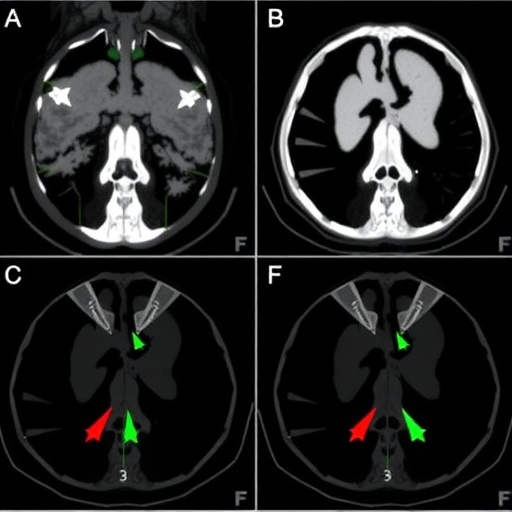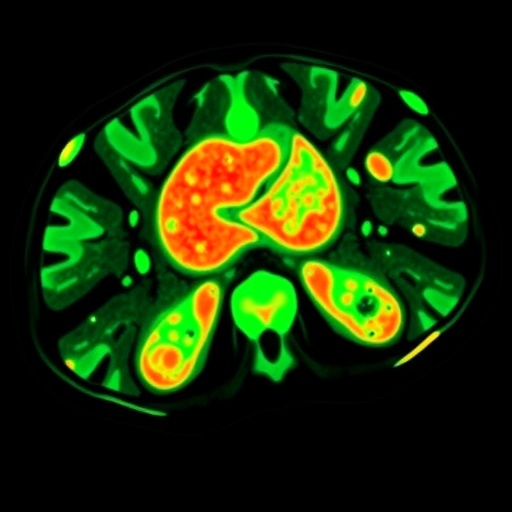
Recent advancements in the field of asthma management have shed light on the intricacies of treatable traits in patients undergoing treatment with inhaled corticosteroids and long-acting beta-agonists (ICS/LABA). A notable study spearheaded by Quint et al. in England has provided a thorough examination of these traits, which are pivotal in enhancing patient outcomes and tailoring individualized treatment protocols. The research is significant, given the rising prevalence of asthma and the burden it places on healthcare systems worldwide.
Asthma is a chronic inflammatory disease of the airways, characterized by airway hyperresponsiveness leading to recurrent episodes of wheezing, breathlessness, and chest tightness. The complexity of the disease often necessitates a multifaceted approach to management, including the use of various pharmacotherapies. The introduction of ICS/LABA therapy has been revolutionary, allowing many patients to experience improved control over their symptoms. However, the challenge remains in identifying the specific traits of individuals that are responsive to this treatment.
The study conducted by Quint and colleagues utilized a descriptive analytic database, involving a diverse cohort of asthma patients from England. This comprehensive approach enabled a systematic evaluation of potential treatable traits, which are factors that could be optimized to improve asthma control and reduce exacerbations. By delving into the data, the researchers aimed to uncover patterns that could be indicative of how different patient characteristics influence treatment responses.
Among the variables analyzed were demographic factors, baseline asthma characteristics, and comorbid conditions. The authors recognized that understanding these elements could potentially lead to more effective personalization of asthma therapy. The significance of comorbidities, such as obesity, anxiety, and allergic conditions, was particularly highlighted as these factors can intricately influence the severity of asthma symptoms and the efficacy of treatment regimens.
The findings of the study underscore the necessity of a tailored approach to asthma care. Quint et al. identified key traumas that could benefit significantly from ICS/LABA therapy, emphasizing those with specific phenotypes and endotypes of the disease. Tailoring treatment plans to align with these identified traits could lead to better management of the condition, reduced healthcare utilization, and enhanced quality of life for asthma patients.
Furthermore, the study illustrated the importance of ongoing monitoring and reassessment in asthma management. Asthma is a dynamic condition; thus, it requires continuous evaluation of both the disease and the patient’s response to treatment. The researchers stressed the need for healthcare providers to remain vigilant in monitoring alterations in symptoms and adapt treatment protocols accordingly.
As the healthcare landscape evolves, the integration of technology and data analytics into patient management is becoming increasingly vital. Quint et al. pointed out that utilizing advanced analytics can facilitate the identification of treatable traits in real-time, allowing for prompt adjustments to treatment plans. This forward-thinking approach is essential, especially in light of the growing demand for personalized medicine across various therapeutic domains.
In conclusion, the research conducted by Quint and his team presents a compelling case for the identification of treatable traits in patients prescribed ICS/LABA for asthma. By decoding the unique characteristics and needs of each patient, healthcare providers can optimize treatment strategies that lead to more favorable outcomes. This study highlights the importance of individualized care in chronic disease management and sets a precedent for future research aimed at refining asthma therapies.
In light of the escalating prevalence of asthma, the insights gained from this research are timely and necessary. By embracing a trait-based approach, there is potential not only to alleviate the burden of asthma on patients but also to pave the way for innovations in treatment modalities. As the field progresses, ongoing research will undoubtedly uncover further nuances that will enhance the standard of care for asthma management, transforming how healthcare providers approach this pervasive condition.
The initiatives stemming from this research could serve as a foundation for future guidelines in asthma treatment protocols. The exploration into treatable traits could spark interest among practitioners, potentially inspiring a shift in how asthma is viewed and managed in clinical practice. It is this kind of transformative research that creates ripple effects across the healthcare continuum, ultimately benefiting patients and healthcare systems alike.
As the research community continues to delve deeper into the intricacies of asthma treatment, it is imperative to disseminate findings such as these effectively. The implications of identifying and managing treatable traits are profound and warrant widespread attention among practitioners, policymakers, and researchers. By embracing this paradigm shift, the potential for improved patient outcomes in asthma management is vast.
The study elucidates not only the importance of understanding treatable traits but also the collaborative effort required from healthcare providers, researchers, and patients alike. There is a shared responsibility to engage in conversations about treatment effectiveness, adherence, and lifestyle modifications that can complement pharmacotherapy.
In conclusion, Quint et al.’s research serves as a cornerstone for future investigations into asthma management and underscores the need for a collective effort to refine treatment approaches. The journey ahead may be challenging, but the rewards of improved patient care and enhanced quality of life are worth pursuing relentlessly. By prioritizing the identification of treatable traits in asthma treatment, the healthcare community can aspire to achieve more precise and effective care for all individuals affected by this chronic condition.
Subject of Research: Treatable Traits in Asthma Patients Prescribed ICS/LABA
Article Title: Identifying Treatable Traits of Patients with Asthma Prescribed an ICS/LABA: A Descriptive Analytic Database Study in England
Article References:
Quint, J.K., Rendon, A., Stanford, R. et al. Identifying Treatable Traits of Patients with Asthma Prescribed an ICS/LABA: A Descriptive Analytic Database Study in England. Adv Ther (2025). https://doi.org/10.1007/s12325-025-03332-2
Image Credits: AI Generated
DOI: 10.1007/s12325-025-03332-2
Keywords: Asthma, ICS/LABA, Treatable Traits, Personalized Medicine, Chronic Disease Management, Data Analytics, Comorbidities.
Tags: airway hyperresponsiveness in asthmaasthma management strategiesasthma prevalence and healthcare burdenasthma research advancementschronic inflammatory disease of the airwaysICS/LABA treatment effectivenessimproving asthma patient outcomesindividualized asthma treatment protocolspatient-centered asthma carepharmacotherapy for asthma managementQuint et al. asthma study findingstreatable traits in asthma patients




